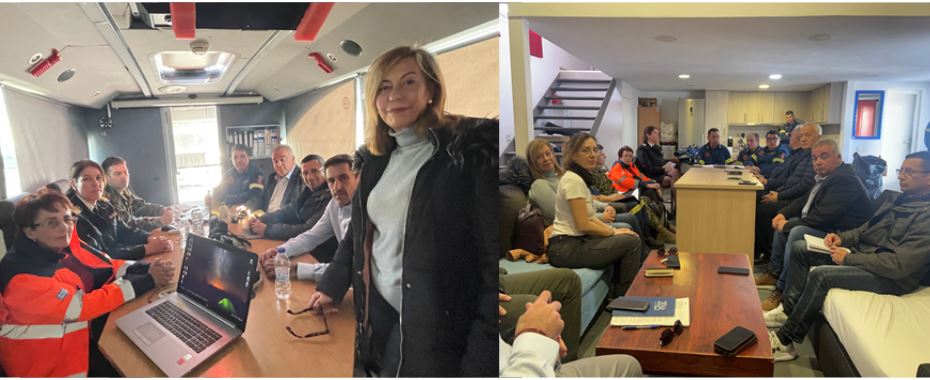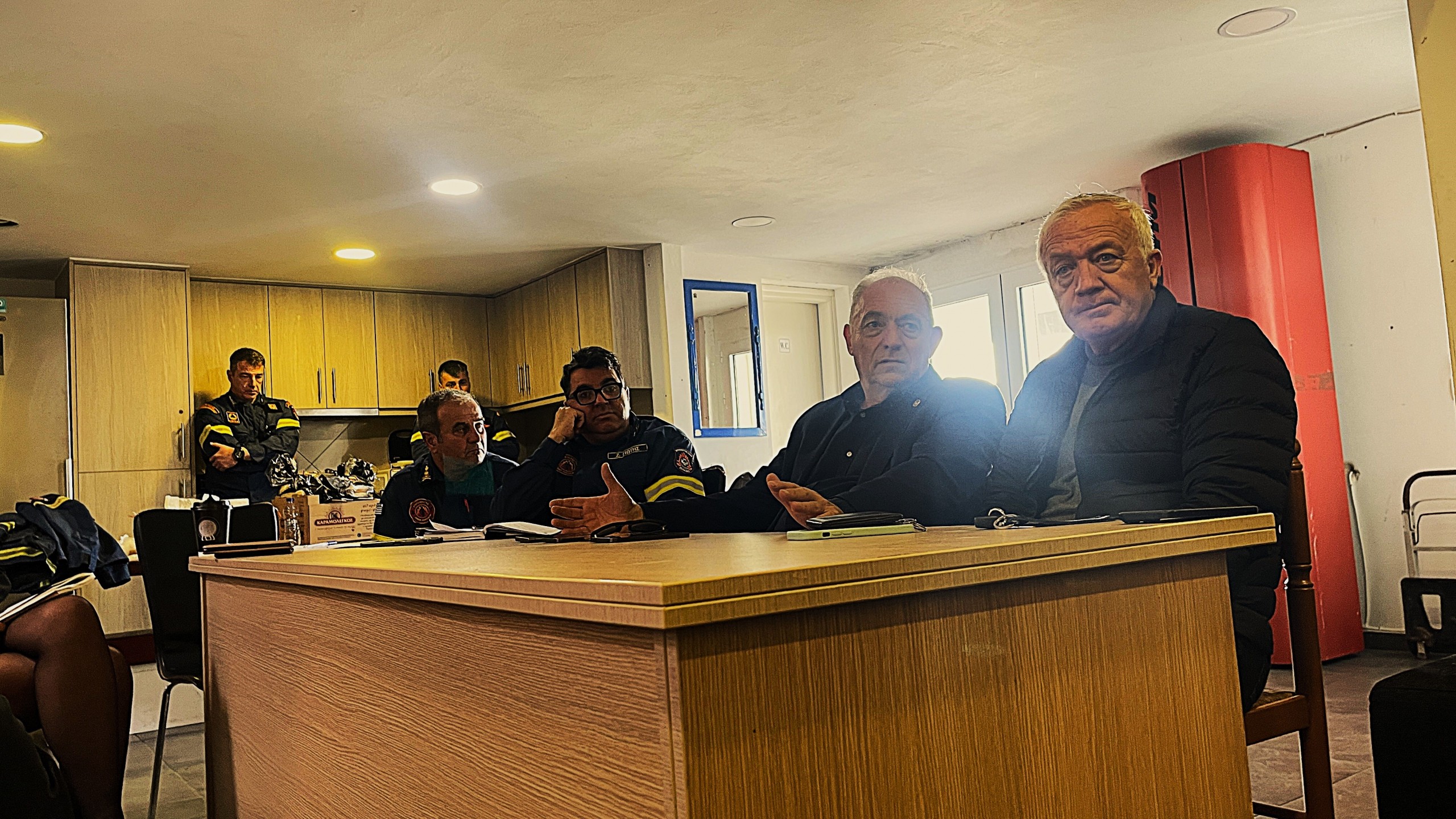Seismicity is consistently lower than last week without any new micro -exacerbation from February 15
Since the onset of seismic activity in the Santorini-Amorgos zone on January 26th until Monday 17 Februarythe Seismology laboratory (S) of Chief (http://dggsl.geol.uoa.gr/) has detected and identified, with strict criteria for ensuring the quality of the results, above 21,500 earthquakes with mechanical learning methods (artificial intelligence), of which over 18,600 with sizes M³1.0.
On February 16, more than 770 earthquakes were recorded, with 26 in size M³2.5, two (2) earthquakes with M³4.0, and none (0) with M³4.5, with the strongest earthquake having size 4.4 (22:56:00, local time). On February 17, more than 780 earthquakes were recorded, with 48 in size M³2.5, four (4) earthquakes with M³4.0, and one (1) with M³4.5, with the strongest earthquake of size 5.1 Record at 09:49:51 (local time). According to the daily seismic data analysis data (without the use of mechanical learning methods) of the EKPA seismology laboratory, in 18or February 95 earthquakes have been recorded, of which three (3) with size M≥4.0, and two (2) with size M³4.5, with the two strongest earthquakes, size 4.9mark at 06:46:53 and 08:08:09 (local time).
Seismicity It has a steady lower rate From last week, without having any new micro -exacerbation from February 15. On February 18, the seismic activity presented migration to a new spatial cluster east of Anhydros, where the magnitude of 4.9 at 06:46:53 (local time) occurred.
From the scientific team of the Geophysics Laboratory (Yiannis Alexopoulos Professor, Vassilis Sakkas Assistant Professor, Dr. Spyros Dilalos, Scientific Associate), was successfully completed, on 18 February 2025, the preliminary phase of gravitations and gravitations in of their densities. In the coming days, the re-counting of the non-monthly Networks of the GPS/GNSS satellite geodetic stations will be completed, covering the central and southern part of Santorini. With the completion of the processing and evaluation of all scientific actions and in collaboration with the seismology laboratory team, the next scientific scientific activities of the geodynamic phenomenon will be designed.
Shipment to Santorini – Wednesday, February 19th 2025
On Tuesday, February 18th, the Coordinator of the Interdisciplinary Risk and Crisis Management Committee of the NCSR, Mr. Efthimios Lekkas, accompanied by the members of the Commission, Mr. Antonarakou and Mr. Evelpidou, visited Santorini and held a meeting with the local business. Protection (TESOPP). The purpose of the meeting was to inform and better coordinate all the business groups active on the island.
The meeting was attended by representatives of EMAK, Tag, Airport, Army, Port Authority, Fire Brigade, Police, Municipal Authority, as well as MP Kafouros.

In the local Civil Protection Operational Coordinating Body, in Santorini
Mr. Lekkas, on the basis of her sentences Seismic Risk Assessment Committee and Seismic Risk Risk and her Hellenic Volcpresented the possible scenarios of the situation, explaining the time scale and the required business planning for each case.
Specifically:
- More likely scenario: The gradual decline of the phenomenon.
- Second scenario: Challenge of an earthquake size of 6 Richter or slightly larger. In this case there is a 4% chance of collapsing 200-300 buildings in Kaldera. Operational groups are ready to face this risk, while measures are being taken to avoid approaching dangerous areas and restriction of overcrowding.
- Volcanic activity: No volcanic eruption in the near future is expected. Columbus is not expected to explode for the next 10 thousand years and discussions about a new volcano that may appear are something that can happen in 200 thousand years. Consequently, these scenarios have no place at the level of business planning.
- Geological changes: Movements were recorded, with the northern part of the island shifting by 8 cm and the south by 4 cm. These changes evolve in geological time and do not affect operational management.

Operational coordination issues
During the meeting, they were also discussed:
- The reopening of schools, as checks have shown that there is no damage to school buildings. However, schools will remain closed by the end of the week for psychological reasons. The educational process must continue seamlessly through teleconference.
- The access zones of access to the island, based on risk, and the necessary protection measures.
- The issue of landslides in Caldera, which is examined by the Interdisciplinary Risk and Crisis Management Committee, with the aim of defining limited access and business positions.
- Operational planning to remove citizens from dangerous areas and avoiding crowds at specific points.
- The probability of a tsunami, which, based on current data, is not expected to exceed 3-4 meters. Currently the planning for business coordination is about 7,000-8,000 people and discussed the adjustment of measures ahead of the tourist season.
The Interdisciplinary Risk and Crisis Management Committee of the NCSR is closely monitoring the evolution of phenomena and continues to cooperate with local authorities, ensuring the immediate and effective response to any situation.
Coordinator of the Interdisciplinary Risk and Crisis Management Committee is Efthymios LekkasOm. Professor of Department of Geology and Geoopervalos.
Members of the Interdisciplinary Risk and Crisis Management Committee are:
Antonarakou AsiminaProfessor and President of the Department of Geology and Geooperimon
Arkadopoulos NikolaosProfessor of Surgery, President of Medical School
Vassilakis EmmanouilAssociate Professor of the Department of Geology and Geooperimos
Diakakis MichaelAssistant Professor of Department of Geology and Geooperimos
Evelpidou Niki – NicolettaProfessor of Department of Geology and Geoenvod
Cavyri GeorgeProfessor of Department of Geology and Geooperimos
Kartalis ConstantineProfessor of Physics
Lagu PagonaProfessor of Epidemiology, Dean of the School of Health Sciences
Lekkas EfthimiosOm. Professor of Department of Geology and Geooperimon,
Mavroulis SpyridonScientific Associate of Department of Geology and Geoenvod
PeakProfessor of medical school
Stavrou Pelios-DimitrisAssistant Professor of the Department of Psychology
Hatzichristou GoldenProfessor of Psychology
He is responsible for the promotion of the project and actions of the Commission is the Member of the Department of Communication and Mass Media. Dimitris Koutsobolis.
Source: Skai
I have worked as a journalist for over 10 years, and my work has been featured on many different news websites. I am also an author, and my work has been published in several books. I specialize in opinion writing, and I often write about current events and controversial topics. I am a very well-rounded writer, and I have a lot of experience in different areas of journalism. I am a very hard worker, and I am always willing to put in the extra effort to get the job done.










